Related Research Articles
In Spain, the denominación de origen is part of a regulatory geographical indication system used primarily for foodstuffs such as cheeses, condiments, honey, and meats, among others. In wines, it parallels the hierarchical systems of France (1935) and Italy (1963), although Rioja (1925) and Jerez (1933) preceded the full system. In foods, it performs a similar role, regulation of quality and geographical origin of products from Spain. There are five other designated categories solely for wine and a further three specifically covering food and condiments, all recognised by the European Union (EU). In Catalonia, two further categories – labelled A and Q – cover traditional Catalan artisan food products, but were not recognised by the EU as of 2007. In recent decades, the concept of the denominación de origen has been adopted by other countries, primarily in Latin America. In 2016, the use of the Denominación de Origen (DO) for wines was registered as a European Union Protected Designations of Origin/Denominación de Origen Protegida (PDO/DOP), but the traditional Portuguese term of DO can still be used legally on labels.

Mosel is one of 13 German wine regions (Weinbaugebiete) for quality wines , and takes its name from the Mosel River. Before 1 August 2007 the region was called Mosel-Saar-Ruwer, but changed to a name that was considered more consumer-friendly. The wine region is Germany's third largest in terms of production but some consider it the leading region in terms of international prestige.

German wine is primarily produced in the west of Germany, along the river Rhine and its tributaries, with the oldest plantations going back to the Roman era. Approximately 60 percent of German wine is produced in the state of Rhineland-Palatinate, where 6 of the 13 regions (Anbaugebiete) for quality wine are situated. Germany has about 103,000 hectares of vineyard, which is around one tenth of the vineyard surface in Spain, France or Italy. The total wine production is usually around 10 million hectoliters annually, corresponding to 1.3 billion bottles, which places Germany as the eighth-largest wine-producing country in the world. White wine accounts for almost two thirds of the total production.

The German wine classification system puts a strong emphasis on standardization and factual completeness, and was first implemented by the German Wine Law of 1971. Nearly all of Germany's vineyards are delineated and registered as one of approximately 2,600 Einzellagen, and the produce from any vineyard can be used to make German wine at any quality level, as long as the must weight of the grapes reaches the designated minimum level. As the current German system does not classify vineyards by quality, the measure of wine ’quality’ is the ripeness of the grapes alone.
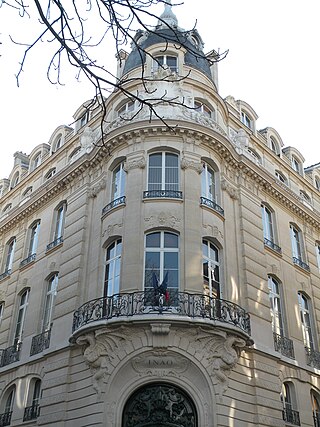
In France, the appellation d'origine contrôlée is a label that identifies an agricultural product whose stages of production and processing are carried out in a defined geographical area – the terroir – and using recognized and traditional know-how. The specificity of an AOC product is determined by the combination of a physical and biological environment with established production techniques transmitted within a human community. Together, these give the product its distinctive qualities.
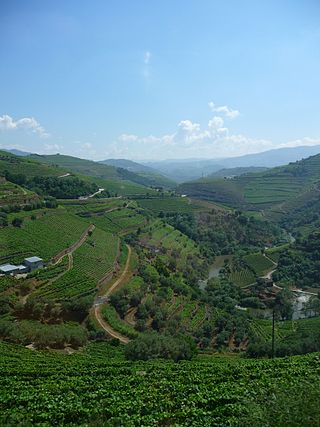
Douro is a Portuguese wine region centered on the Douro River in the Trás-os-Montes e Alto Douro region. It is sometimes referred to as the Alto Douro, as it is located some distance upstream from Porto, sheltered by mountain ranges from coastal influence. The region has Portugal's highest wine classification as a Denominação de Origem Controlada (DOC) and is registered as a Protected Designation of Origin under EU and UK law, and as a Geographical Indication in several other countries through bilateral agreements. While the region is best known for Port wine production, the Douro produces just as much table wine as it does fortified wine. The non-fortified wines are typically referred to as "Douro wines".
South African wine has a history dating back to 1659 with the first bottle being produced in Cape Town by its founder and governor Jan van Riebeeck. Access to international markets led to new investment in the South African wine market. Production is concentrated around Cape Town and almost exclusively located within the Western Cape province, with major vineyard and production centres at Constantia, Paarl, Stellenbosch and Worcester.
The glossary of wine terms lists the definitions of many general terms used within the wine industry. For terms specific to viticulture, winemaking, grape varieties, and wine tasting, see the topic specific list in the "See also" section below.
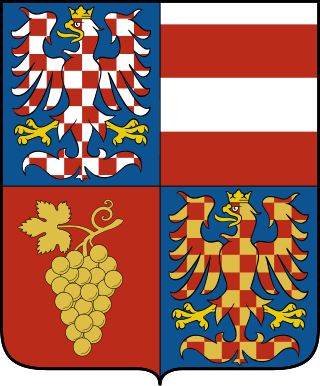
Wine in the Czech Republic is produced mainly in southern Moravia, although a few vineyards are located in Bohemia. However, Moravia accounts for around 96% of the country's vineyards, which is why Czech wine is more often referred to as Moravian wine. Production centers on local grape varieties, but there has been an increase in the production of established international strains such as Cabernet Sauvignon.
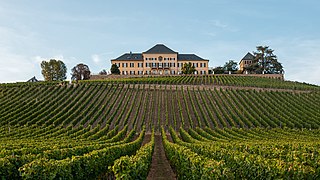
Schloss Johannisberg is a castle and winery in the village of Johannisberg to the west of Wiesbaden, Hesse, in the Rheingau wine-growing region of Germany. It has been making wine for over 900 years. The winery is most noted for its claim to have "discovered" late harvest wine. The palace is a venue of the Rheingau Musik Festival, made available by co-founder Tatiana von Metternich-Winneburg.
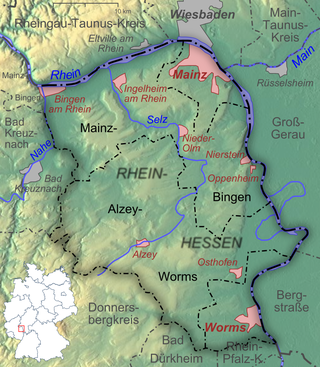
Rheinhessen is the largest of 13 German wine regions (Weinanbaugebiete) for quality wines with 26,758 hectares under cultivation in 2018. Named for the traditional region of Rhenish Hesse, it lies on the left bank of the Rhine between Worms and Bingen in the federal state of Rhineland-Palatinate. Despite its historic name it is currently no longer part of the federal-state of Hesse, this being the case since the end of World War II. There have been several unsuccessful attempts to legally reunite the former wine growing districts of Mainz on the Hessian side during the post-war area. Rheinhessen produces mostly white wine from a variety of grapes, particularly Riesling, Müller-Thurgau and Silvaner, and is best known as the home of Liebfraumilch, although some previously underrated Rieslings are also made, increasingly in a powerful dry style.
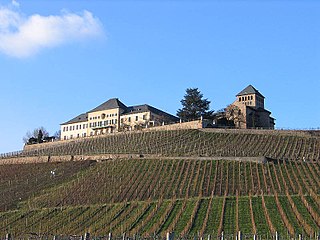
Rheingau is one of 13 designated German wine regions (Weinbaugebiete) producing quality wines . It was named after the traditional region of Rheingau, the wine region is situated in the state of Hesse, where it constitutes part of the Rheingau-Taunus-Kreis administrative district. Although, making up only 3 percent of the total German vineyard area, Rheingau has been the source of many historically important innovations in German wine making, and contains many wine producers of international reputation, such as Schloss Johannisberg. Rheingau, with 3,125 hectares of vineyards in 2016, also boasts a higher proportion of Riesling (77.7%) than any other German wine-growing region, with Spätburgunder making up most of the rest (12.2%), followed by Müller-Thurgau.

The Hessische Bergstraße is a defined region (Anbaugebiet) for wine in Germany located in the state of Hesse among the northern and western slopes of the Odenwald mountain chain. With only 467 hectares of vineyards it is the smallest of the 13 German quality wine regions. At 21% red grape varieties and 79% white varieties, it is planted with primarily Riesling, Pinot gris (12%) and Spätburgunder. Hessische Bergstraße is divided into two districts (Bereiche) – Umstadt and Starkenburg – three collective vineyard sites and 24 individual vineyard sites.

Nahe is a region (Anbaugebiet) for quality wine in Germany, along the River Nahe in the state of Rhineland-Palatinate. On the region's 4,155 hectares of vineyards in 2008, white wine grapes dominate with 75% and Riesling is the most common variety with 27.2%. A characteristic of the Nahe region is that the soils are very varied owing to the region's volcanic origins.
Mittelrhein is a region (Anbaugebiet) for quality wine in Germany, and is located along a 120 km stretch of river Rhine in the tourist portions of the Rhine region known as Middle Rhine. On the left bank of Rhine, vineyards begin immediately downstream of the Nahe estuary and last until Koblenz. On the right bank, vineyards begin where Rheingau ends and last until 8 kilometers south of Bonn, in the Siebengebirge. Parts of the Rhine Gorge, a UNESCO World Heritage since 2002, make up the southern part of Mittelrhein.

Stargarder Land is a small region for country wine in northeastern Germany, which was defined in an amendment to the German wine law on 4 March 2004. Located in Mecklenburg-Vorpommern, approximately 100 km north of Berlin, it is by far the northernmost official wine-growing area of Germany. The designation Mecklenburger Landwein is used for country wines from this region.

Schloss Vollrads is a castle and a wine estate in the Rheingau wine-growing region in Germany. It has been making wine for over 800 years.

Steinberg is a 32.4 hectares wall-enclosed vineyard near Hattenheim in the Rheingau. It is the largest wall-enclosed vineyard in Germany.
References
- ↑ Hessen.de: Großlagen Rheingau, last updated June 2005